Carrying out replanting of embryos during IVF. After replanting embryos, how to behave.
Embryo transfer
Embryo Transfer
Embryo replanting (embryo transfer) is a medical manipulation that is carried out as part of in vitro fertilization. During the procedure, the embryo is transferred into the uterine cavity.
Under favorable circumstances, this is followed by pregnancy. Embryo replanting during IVF is a very important and crucial stage of the artificial insemination procedure.
How is embryo transfer going?
The reproductologist and the embryologist jointly choose the day of embryo transfer. The procedure is carried out during the implantation window. This is the period of time during which the endometrium (inner layer of the uterus) is ready to receive the embryo.
Transferring at any other time does not make any sense, since in this case the embryo will not be able to attach to the wall of the uterus and pregnancy will not occur.
Before embryo transfer, studies are carried out to determine the optimal period for the procedure. These are ultrasound and blood tests for hormones.
- take a shower in the morning;
- light breakfast is allowed;
- 2 hours before the transfer, drink a glass of water to moderately fill the bladder;
- you should come to the procedure on time, without makeup and perfumes;
- avoid stress and anxiety.
Features of the procedure:
- the stage of development of the embryo should correspond to the degree of maturity of the endometrium;
- the transfer procedure is completely painless and does not require anesthesia;
- embryo transfer is carried out using a flexible and very thin catheter, with the participation of a reproductive specialist and an embryologist;
- the whole procedure takes no more than 5-10 minutes;
- transfer is carried out under the control of ultrasound.
Some points are discussed with the woman before the replanting is carried out. How many embryos to use for transfer - one or two - the reproductologist determines together with the patient.
Transfer (replanting) 2 embryos increases the chance of success, but increases the risk multiple pregnancy.
The use of the European standard for limiting the number of transferred embryos (no more than 2) at VitroClinic makes it possible to minimize the risk of multiple pregnancy.How to behave after replanting embryos?
Immediately after embryo transfer, a woman is recommended to lie down for 30 minutes. Then she can leave the clinic. The patient is prescribed drugs that will increase the chances of the onset and maintenance of pregnancy.
After the procedure, the attending physician gives the woman recommendations on how to behave after the replanting of embryos. A reproductive specialist may advise:
- do not overeat;
- avoid stress;
- give up sexual activity;
- avoid physical activity;
- observe the first day of semi-bed rest.
Different specialists have different opinions about the lifestyle of a woman in the first days after the transfer. However, there is currently no proven effect of any restrictions on the chances of pregnancy. But still, it is worth giving up sexual intimacy in the first 2-3 weeks after embryo replanting. Otherwise, you can lead a normal life.
Pregnancy after embryo transfer is determined after 2 weeks using a blood test for hCG. Three weeks after the procedure, the woman undergoes an ultrasound scan. In this case, more reliable results can be obtained, since the presence of a fetal egg in the uterus is determined visually, and not by the level of hormones in the blood or urine.
Feelings after embryo transfer
Most women have no sensations after embryo replanting. Some patients claim that after 3-5 days they begin to feel:
- headache;
- nausea;
- weakness;
- change in taste preferences;
- emotional lability.
These are signs of pregnancy. However, they may appear no earlier than 2-3 weeks after the embryo transfer was performed. Feelings that a woman notes in more early period, most likely caused by self-hypnosis and a strong desire to become pregnant.
If you have any warning signs, you should see a doctor.
These may be:
Elevated temperature. After embryo transfer, if pregnancy occurs, slight hyperthermia is possible. But if the body temperature rises significantly, and especially if this symptom is accompanied by intoxication of the body, you should inform your doctor about this.
Pain after embryo transfer. Intense pain in the lower abdomen may indicate ovarian hyperstimulation syndrome. That's why given state also requires a visit to the doctor.
At VitroClinic, all patients undergoing IVF receive a business card with their doctor's phone number. She always has the opportunity to call him and find out why this or that symptom appeared after the embryo transfer, what it indicates and whether it is necessary to come to the clinic for examination.One of the most widespread fears among women who decide on IVF is can embryos fall out of the uterus after transplantation? Quite a reasonable fear: if the embryos are introduced by a catheter through the cervical canal into the uterus, what can prevent them from exiting the same way? Carefully study the anatomical atlas - all fears will disappear. The next two weeks of waiting will be a little easier.
Women think that when the doctor places the embryos inside the uterus, they have freedom of maneuver. And if you take a static position (preferably horizontal), the embryos will settle on one of the walls of the cavity and attach. If you move after the procedure, they will be driven from their occupied place and fall out of the cavity down.
In fact, the uterus is a muscular organ the size of a woman's fist. When people hear the expression "uterine cavity", they think that there is some kind of space there. But this is not true. The cavity in question is potential. The anterior and posterior walls of the uterus are in contact with each other. Put your palms together as if you are praying - this is what the uterus looks like. Now place a small ball between your palms - this will be the embryo. He translated potential space into real. Again, the hands are closed at the bottom of the ball, and it cannot fall out. So, no matter how you jump in the literal and figurative sense, you won’t be able to shake it out. If the embryo good quality and the endometrium is ready - implantation will occur regardless of the external physical activity of the body.
What to doafter embryo transfer?
Someone is afraid to sneeze and cough, someone is afraid to go to the toilet and strain hard. It remains only to ask how humanity has not died out until now, if implantation is so dependent on random uterine contractions. And what about those who manage to get an orgasm two weeks before the test in a dream? Fortunately, it is produced during the luteal phase to prevent rejection of the embryo during uterine contractions.
Bed rest after embryo transfer not needed for IVF. Keep living your normal life, keep moving! Let the blood washing the uterus be rich in oxygen and beneficial substances. Lying in bed will not add health to the body, and the psyche - peace.
An interesting study was conducted demonstrating the futility of bed rest after embryo transfer in IVF.
57 patients had one air bubble placed in the uterus. Group A remained in a horizontal position, while Group B went about their business. After 15 minutes, the assessment was made. The bubble in group A moved by 2.69 mm, and in group B by 2 mm. The distance to the fundus of the uterus was reduced in 26% of women in group A and in 15% of women in group B. 28 patients received two air bubbles. After 15 minutes in group A, the position of the first bubble changed by 3.07 mm, the second - by 2.69 mm; in group B - by 1.80 mm and 1.80 mm, respectively. The distance to the bottom of the uterus decreased for the first bubble in 2% and the second - in 22% of women from group A; in group B - 18% and 15%, respectively. The control was carried out by means of ultrasound. The doctors concluded: there is no significant difference in the behavior of the patient after embryo transfer with IVF.
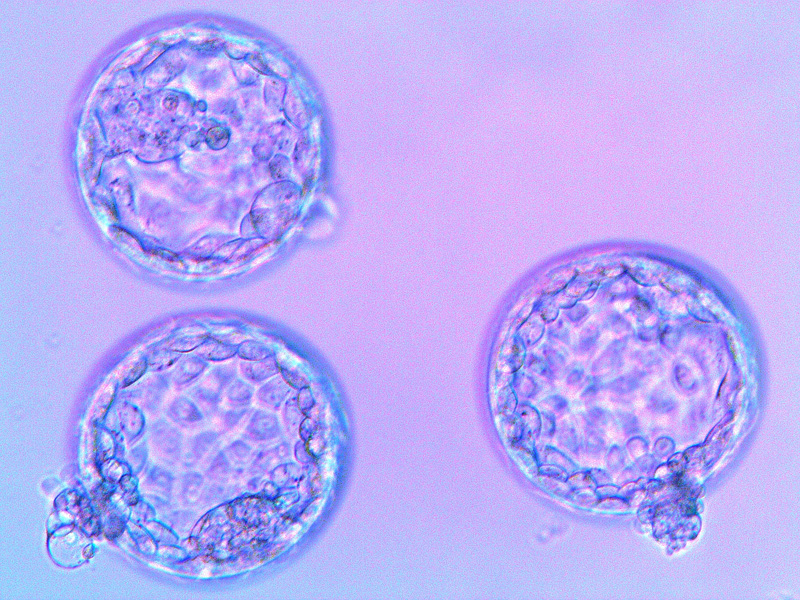 New experiments have shown that, despite the generally accepted practice, the appointment of bed rest does not justify itself. In addition, it turned out that women who continued to lie down after the transfer of embryos into the uterus than those who immediately got up.
New experiments have shown that, despite the generally accepted practice, the appointment of bed rest does not justify itself. In addition, it turned out that women who continued to lie down after the transfer of embryos into the uterus than those who immediately got up.
The procedure itself is carried out with a long thin catheter and requires 5-10 minutes, during which the woman lies on a special chair. Some clinics practice transferring patients to a special rest room, where she can spend from several minutes to several hours. In other clinics, women go home immediately.
In several experiments, it has been found that lying down for a long time can even harm the ability to get pregnant.
In a recent study conducted in Spain, some patients were left to lie down after being replanted, while others were asked to stand up immediately. 120 women (50%) remained in a horizontal position for another 10 minutes after the procedure, the other 120 immediately left the office. In the first group, 50 women gave birth, in the second - 68. The percentage of embryo implantations after IVF was the same in both groups, but spontaneous abortion in the "rested" group occurred in 27.5% versus 18% in the "active" group. However, statistically such a difference can be explained by chance.
Researchers believe that in a vertical position, a woman's uterus is located horizontally, which makes implantation more successful. They also believe that walking reduces stress, which may further explain the varying percentage of patients who denounced to childbirth.
A full description of the study can be read in Fertility and Sterility, June 10, 2013.
The IVF procedure (in vitro fertilization) is recommended for complete female (obstruction of both fallopian tubes) and male infertility; when it is not possible to establish the cause of difficulties with conception. Conservative methods of infertility treatment have been used for 2 years.
If after this period it was not possible to achieve positive results, they resort to IVF.
Carrying out in vitro fertilization
When conducting IVF, an important point is the replanting of embryos. This responsible event requires special preparation.
It is necessary to examine the pelvic organs and the microflora around the uterus, cure sexual infections, restore hormonal balance, and stimulate ovarian function.
When the endometrium begins to perform its work normally, they begin to transfer embryos, which must first mature to the blastocyst stage - the initial stage of embryo development, preceding transplantation into the uterus.
The age of the embryo plays a very important role. At the blastocyst stage, it has a good ability to implant. In addition, physiological synchronization between intrauterine susceptibility and his condition improves.
When a woman's follicles with eggs mature, a puncture is performed. Subsequently, the extracted eggs are fertilized with the husband's or donor's sperm. This process does not occur in the body of a woman.
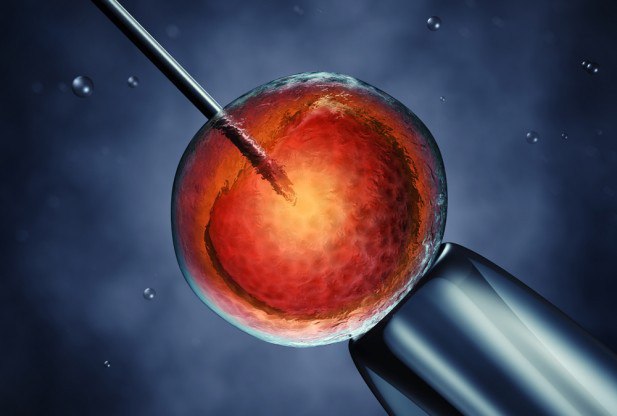
If the husband's sperm quality is low, one spermatozoon is injected with a microneedle using the ICSI method. In medicine, this process is called the introduction of sperm into the cytoplasm of the oocyte.
The cytoplasm is the part of the cell responsible for its development.
Oocytes are future eggs.
Embryos can be prepared by two methods: vitrification and assisted hatching. In the first case, viable cells are subject to cryopreservation - they are frozen in liquid nitrogen. In the second, they mechanically or chemically act on the membrane of the fetal egg, which contributes to the release of the embryo from it and attachment to the wall of the uterus.
Replanting and transfer of embryos
Freezing in liquid nitrogen occurs at a temperature of 196°. A third of the removed cells die, while the rest retain the ability to develop for several years. This process is called cryopreservation. Only the strongest cells and those that have reached a certain stage of development are subject to transplantation.
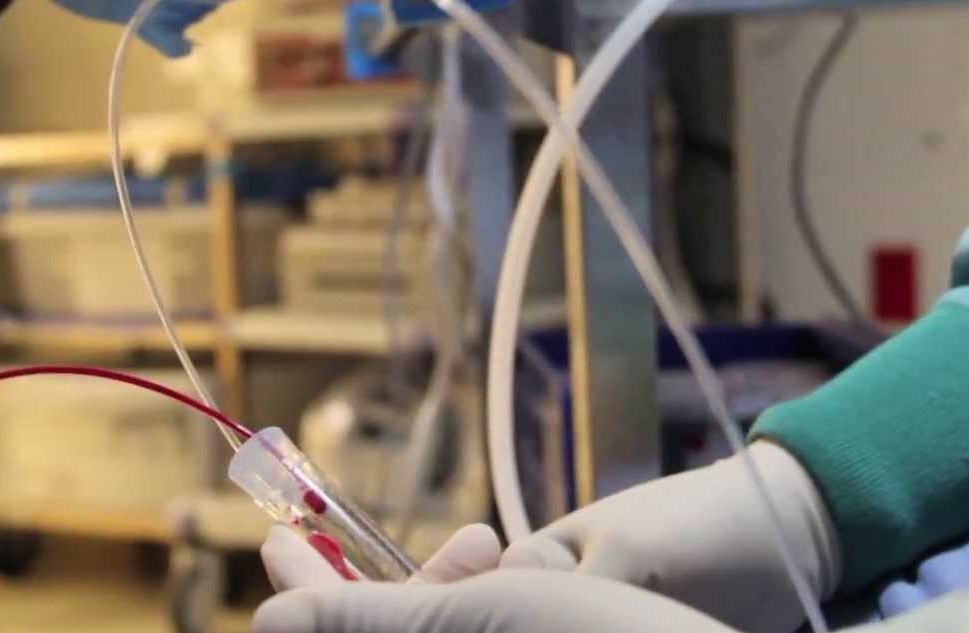
Embryo transfer takes place on day 2 and day 5, or on day 3 and 5. This moment depends on individual indications. The specific dates are explained by the fact that it is on the 5th day that the fetal egg is attached to the uterus during natural conception.
As a rule, only 2 embryos are used for artificial insemination, but it happens that up to 4 are used. Such figures are due to the fact that in some cases all implanted ones take root. As a result, the risk of spontaneous abortion increases. Therefore, a reduction is performed - one or more of them are removed.
The IVF procedure itself is not complicated and lasts only 10-15 minutes. It is, however, completely painless. All actions are controlled by an ultrasound machine, so the specialist sees them on the monitor. A catheter is inserted into the uterine cavity through the cervical canal, through which the embryos are transferred on the 2nd and 5th, or 3rd and 5th days.
What to do before IVF
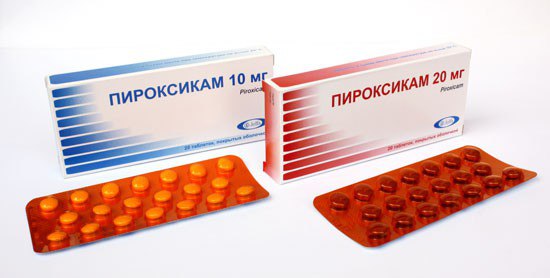
However, after embryo replanting, you can not have sex for some time. As a rule, sexual intercourse is allowed after receiving the results of an hCG analysis or the first ultrasound.
It is also recommended to take Piroxicam immediately before embryo transfer. This drug belongs to the group of oxycams and is a non-steroidal anti-inflammatory drug. It also has an analgesic and antipyretic effect.
Piroxicam is indicated for both external and internal use. As a rule, it is prescribed for pain in the spine, myalgia, neuralgia, inflammation of soft tissues. Also Piroxicam is used to treat dysmenorrhea. And with IVF, it is prescribed to reduce spasticity before transplantation. Take it 1-2 hours before the procedure.
On the day of the puncture, a woman's blood is taken for estradiol, a hormone whose amount is used to judge the functional state of the ovaries. The results of the analysis are necessary for subsequent comparison.
What happens after IVF
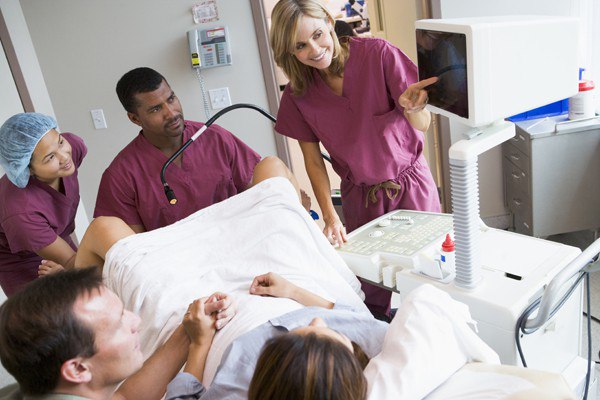
As already known, embryo replanting takes place on days 2 and 5, or 3 and 5. This moment, of course, is very important, but in the future, the body adapts to the planted cells, which is no less a serious period.
The nutrition of a woman, if there is no ovarian hyperstimulation syndrome, should be normal, that is, the same as before the procedure. You should not radically change the diet, otherwise the body is under stress, which can affect pregnancy. It is necessary to provide emotional and physical peace.
Bed rest is recommended for the first three days. Then you need to slowly increase physical activity, for example, slowly walk in the fresh air. There is also a need for protein foods, but chicken should be avoided. If there are no restrictions, you need to drink more clean water.
How is pregnancy determined after IVF?
The temperature after replanting the embryos, as a rule, rises. Doctors will definitely warn about this moment. You can't beat her. If the thermometer mark does not exceed 37.5 °, then do not panic.
The rise in temperature is due to several factors:
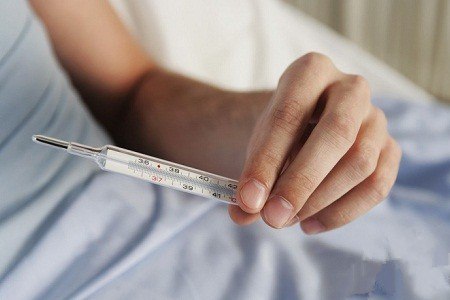
- There is a sharp release of progesterone;
- The body reacts to the appearance of the embryo after taking hormonal drugs;
- The pregnancy has come.
The replanting of embryos after their temporary cryopreservation does not cause any abnormal conditions. The body adapts, the immune system directs efforts to maintain balance, the production of hormones that support pregnancy begins, the temperature gradually decreases, and other processes return to normal.
All indicators of the state of the body should be monitored by a specialist, because only he can accurately determine where the norm is and how the pathology manifests itself. In addition, sometimes an increase in temperature may indicate an infection or indicate an ectopic pregnancy.
Measurement results basal body temperature are not reliable, since there is a reception hormonal drugs but they are still taken into account.
As a rule, "Utrozhestan" is prescribed to support pregnancy (2 injections at night, 1 during the day). All women are prescribed injections of the drug "Fragmin", the action of which is aimed at improving blood supply in the uterus.
It is also necessary to make a coagulogram to determine blood clotting. If the indicators are normal, Fragmin is canceled. In case of violations, individual treatment is prescribed depending on the pathology.
Status after embryo transfer

After IVF, according to women, the same phenomena are observed as during menstruation: weakness occurs, the stomach begins to pull. In addition, a slight bloody secret is often released.
Usually they occur as a result of the attachment of the embryo to the uterine cavity. Allocations are normally observed on the 6-12th day and have a pink color, last several hours.
In some cases, bleeding indicates a pathology - a violation of the hormonal balance. To avoid this, the doctor must control the level of estradiol and progesterone and, if necessary, prescribe drugs whose action is aimed at normalizing their concentration. Smearing discharge sometimes indicates a hormonal imbalance, so the dose of medication must be urgently changed.
Abundant red discharge indicates rejection of the fetal egg. In this case, an urgent examination is necessary. The woman is hospitalized to prevent a miscarriage and keep the pregnancy.
Infertility is said to be in the event that, with regular sexual life without the use of contraception, pregnancy does not occur within a year. According to statistics, in Russia 15-20% of couples suffer from infertility.
With infertility, which is associated with a violation of the patency of the fallopian tubes and with male infertility, assisted reproductive technologies come to the rescue, in particular in vitro fertilization - IVF (embryo transfer). The essence of the method is that the fertilization of the egg occurs outside female body followed by embryo transfer on day 2.
Consider how a woman is prepared before embryo transfer, how embryo transfer occurs, and what a woman should do after embryo transfer.
IVF - embryo replanting has the following indications:
- obstruction of the fallopian tubes or condition after their removal;
- immunological infertility;
- endometriosis;
- decrease in sperm motility, a decrease in their number or the complete absence of sperm in the ejaculate.
Embryo replanting is also performed in cases where other attempts to overcome infertility have been ineffective for 1-1.5 years.
IVF - embryo replanting is performed under the condition that there are no signs at the time of the procedure inflammatory processes For spouses, the consent of both is also required. IVF - embryo replanting can be carried out only if the woman has no pathological changes in the uterine cavity and ovaries.
Examinations before embryo transfer
Spouses should be examined before embryo transfer in order to maximize the chances of pregnancy, as well as reduce the risk of possible complications.
Preliminary examination of a woman includes: examination by a gynecologist-endocrinologist, colposcopy, ultrasound examination, hormonal examination and examination for infections (toxoplasmosis, cytomegalovirus, herpes, syphilis, gonorrhea, chlamydia) vaginal swab and bacteriological analysis of the cervical canal.
The examination of a man includes an examination by an andrologist, a spermogram with the determination of sperm morphology, a MAP test, bacteriological and biochemical analysis of sperm, hormonal examination, and ultrasound.
Embryo transfer is a multi-step process, and its success depends on many factors.
Before the embryo transfer, the woman is stimulated to superovulate. To do this, on the first day of the cycle, she begins to take medicinal product stimulating ovarian activity. During one cycle, one egg matures, and under the influence of this drug, several eggs mature, so the chance of a successful procedure increases.
The developing follicles are constantly monitored by ultrasound, before the embryo transfer, the level of hormones is determined. The follicles reach the required size within 8-10 days, and after that the woman is injected chorionic gonadotropin, which ensures the final maturation of the eggs.
The next stage is the extraction of mature eggs, which is performed with a puncture needle under ultrasound control. Mature eggs are selected from the largest follicles. The procedure is performed on an outpatient basis.
The next step is to obtain spermatozoa. They are extracted from the ejaculate, and if there is not enough in the ejaculate, from the testicle or from the epididymis.
When sorting under a microscope, high-quality and mature eggs are selected. And to check the mobility and viability of spermatozoa, they are placed in a special environment. There are 50,000 - 100,000 sperm per egg. And only one sperm enters the egg - fertilization occurs. Two cells merge into one, which begins to divide.
When the embryos consist of 4-8 cells, they are ready to be transferred into the woman's body. This happens no earlier than after 48 hours, so most often embryo replanting is carried out on day 2. By the end of the second day, the quality of the embryo is assessed under a microscope. It must consist of at least four cells.
Various clinics practice different time embryo replanting, starting from the 2nd to the 5th day of its cultivation. Each clinic is based on its experience, observations and IVF results. On the one hand, on day 4-5, embryos consist of a larger number of cells, so there are more chances to survive.
On the other hand, embryo survival is better in the natural environment (in the uterus) than in artificial environments, so many clinics are of the opinion that it is better to transfer embryos on day 2. In addition, the "older" the embryo, the more requirements are imposed on culture media and cultivation conditions.
The implantation of embryos into the uterine cavity is carried out using a catheter, and to increase the chances of a positive result, 2-3 embryos are introduced. After successful replanting of embryos, drugs are prescribed that support their development. After 3 weeks, the fetal egg can be seen with ultrasound.
Is it possible to transfer frozen embryos
After replanting the embryos into the uterine cavity, it is possible to freeze the remaining high-quality embryos (type A and B) and store them for a long time at liquid nitrogen temperature. This is resorted to in case the attempt is unsuccessful or the pregnancy cannot be carried. Embryos tolerate freezing well and only 30% of embryos are then non-viable. If the embryos have undergone the process of freezing-thawing, then the replanting of frozen embryos is performed on the day of defrosting.
Frozen embryo transfer can take place according to different protocols, but in any case, ovarian puncture is not performed. The choice of protocol depends on the hormonal and reproductive status of the woman.
In the first case, with the preserved ovulatory ability of the ovaries, the replanting of frozen embryos takes place in the natural ovulatory cycle. The doctor observes the growth of the follicle and endometrium, and implants the embryos during ovulation. The transfer of frozen embryos according to this protocol allows the woman not to undergo repeated hormonal stimulation.
The second option is the replanting of frozen embryos in a stimulated cycle. According to this cryo-protocol, hormonal preparations are taken, which ensures the growth of the endometrium, and replanting does not depend on one's own ovulation.
In the third option, frozen embryo transfer is carried out with a stimulated cycle with simultaneous blockade of the pituitary gland. This option is the most expensive and drug-laden.
How to behave after embryo transfer
For the first three days after embryo transfer, a woman is often recommended bed rest. In the following days, the motor regimen can be expanded: walking, but without lifting weights. Of course, after embryo replanting, it is necessary to observe complete sexual rest until the time of the first ultrasound.
It is very important after the replanting of embryos that the medical prescriptions of the doctor are strictly followed.
The effectiveness of the IVF procedure ranges from 20 to 40%. Pregnancy after embryo transfer has its own characteristics. Most often, in female infertility, there are changes in the hormonal background, which affects the course and maintenance of pregnancy.
After embryo replanting, for the normal course of pregnancy, it is necessary to prescribe hormone replacement therapy throughout the pregnancy. Despite this, after embryo replanting, there remains an increased likelihood of abortion.
After embryo transfer, multiple pregnancy can occur, since in some cases several embryos are transferred into the uterine cavity to increase the likelihood of implantation.
However, multiple pregnancy in some cases is complicated by miscarriages and premature births. Therefore, after replanting embryos at 10 weeks, in order to reduce the percentage of miscarriage, a reduction procedure can be performed.
When all the procedures associated with treatment, ovarian stimulation, collection of oocytes are in the past, one thing remains, but the most important event is embryo transfer. Finally, something happened for which it all began and lasted so painfully long. By the way, among doctors it is not customary to talk about replanting embryos. A more accurate term would be embryo transfer. However, this does not change the essence of the process.
In order for all efforts not to be in vain, you need to be especially careful right on the day of embryo transfer and a few days after that. This concerns the behavior of a woman - you should not rush headlong to plant potatoes or glue wallpaper in a juicy order. All this is not worth what you have experienced, and for what it was all.
Rules of conduct after embryo transfer:
- no physical activity, bed rest for the first 10 days after embryo transfer. You can get out of bed only in extreme cases and to visit a doctor. The first few days are extremely important for the implantation of transplanted embryos;
- lack of sexual intercourse for the first 3 months after transplantation. This is very important - the first 12 weeks are extremely dangerous for miscarriages;
- strict adherence to the instructions of the doctor;
- proper nutrition - it is important that protein foods are present in the diet. It is better to cook for a couple or boil vegetables, fish, meat. You can drink fruit drinks, dairy products, green tea, rosehip broth;
- - every day at the same time. The results obtained must be carefully entered into a notebook, build a graph. Pay attention if for 3 consecutive days the level of basal temperature is below 37 degrees. This is an occasion for an urgent call to the clinic and a meeting with the doctor.
Embryo development after IVF
The transfer of the embryo into the uterus occurs under the control of ultrasound, which is performed transabdominally (through the abdomen). What happens after the replanting of embryos is, first of all, their implantation. The transfer itself is not the moment of pregnancy, it is necessary that the embryos are implanted first.
The development of the embryo after transfer (replanting) during IVF occurs according to the same scenario as in a normal pregnancy. The difference is that a woman is implanted with several embryos. All or several of them can take root. Dead or extra embryos are removed, leaving only 1-2 most viable embryos.
Doctors monitor the development of implanted embryos - they take tests for progesterone, hCG. They are carried out on certain days - on the day of transplantation, on the seventh and fourteenth day after the transfer. There is no need for more frequent monitoring. So, for example, the third day after embryo transfer is not indicative.
With the onset of pregnancy and its normal course, a woman does not need special monitoring by a doctor. Everything goes according to the same scheme as in a normal pregnancy.
Embryo death
Unfortunately, embryos do not always take root in the uterus. The figure is quite low, and at the same time almost 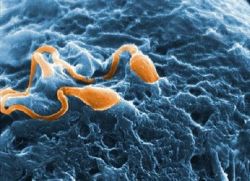 it is impossible to determine why the embryo does not take root and does not develop.
it is impossible to determine why the embryo does not take root and does not develop.
Therefore, usually 2 or more embryos are transferred to the uterus, which increases the likelihood of a long-awaited pregnancy. At the same time, the chance of multiple pregnancy increases. It is with the fact that more and more couples resort to IVF that the increased number of cases of twins and even triplets is associated.
After the failure, that is, the death of the embryos transplanted to the woman, a special medical commission of the center where you were treated evaluates the situation and makes recommendations regarding the further actions of the spouses.




